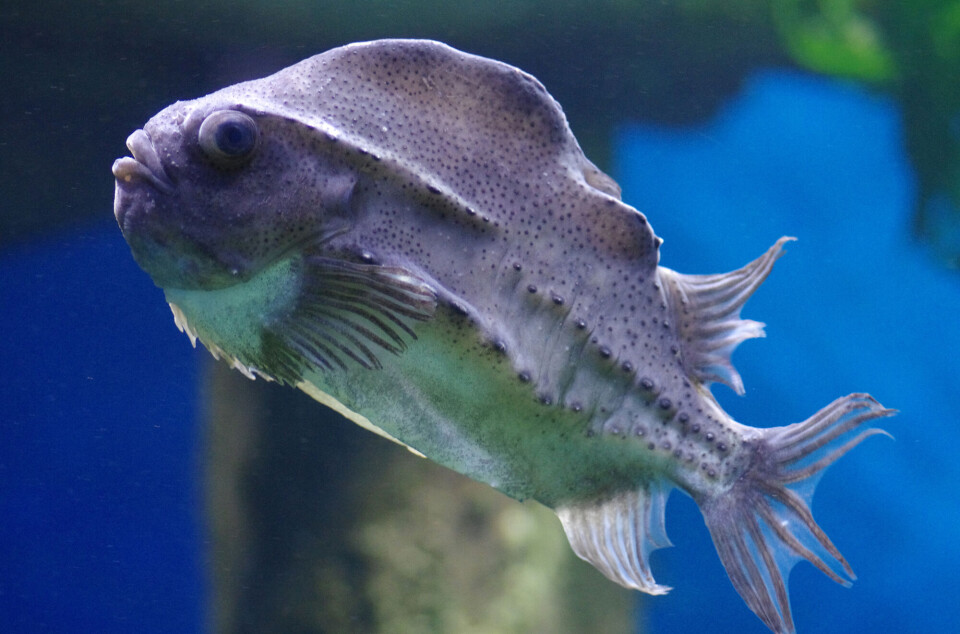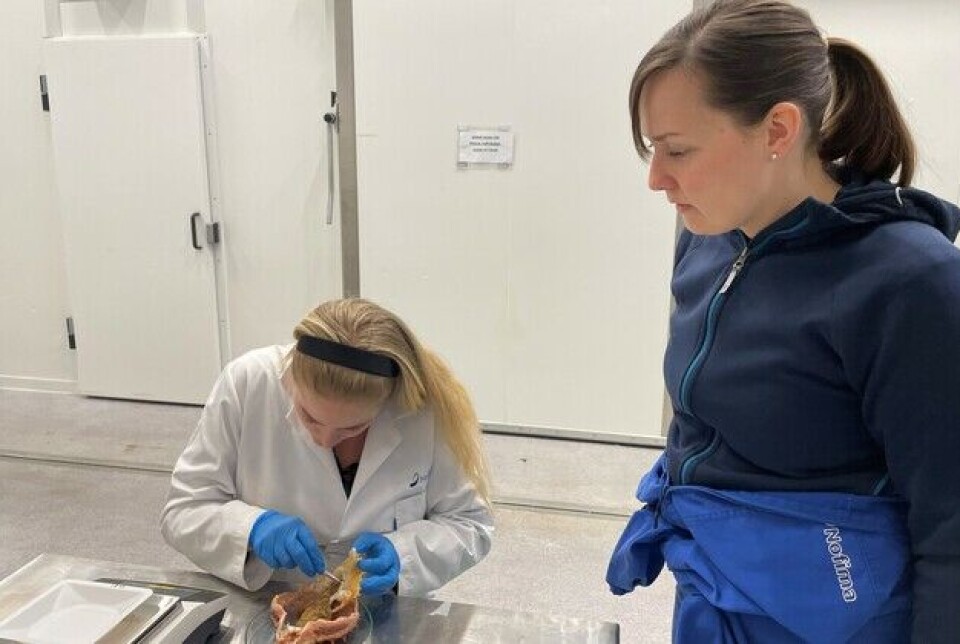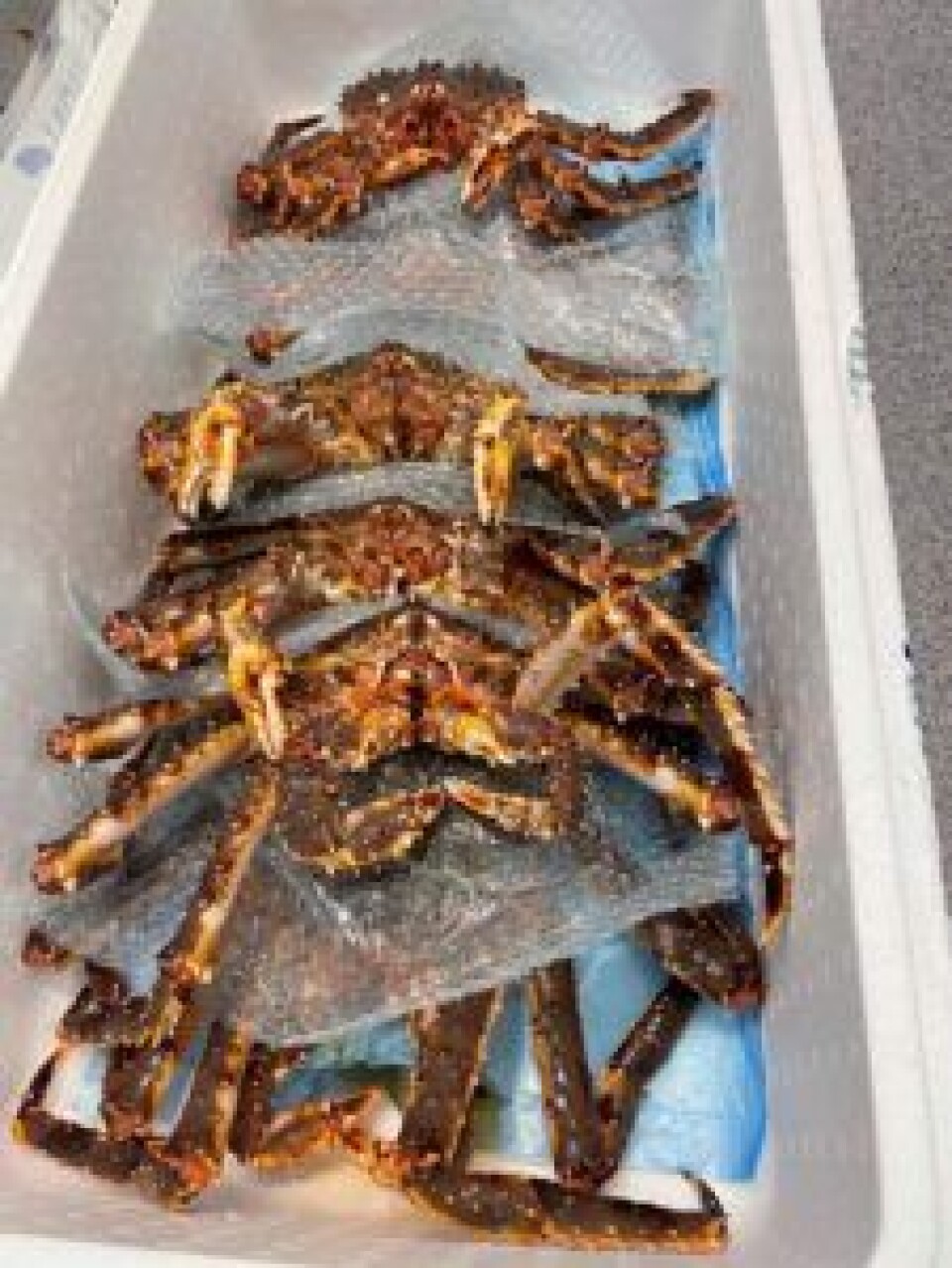THIS CONTENT IS BROUGHT TO YOU BY Nofima The Norwegian Institute of Food, Fisheries and Aquaculture Research - read more

Lumpfish becomes food fit for kings
It has long proved difficult to find other uses for lumpfish once it has finished its mission as a lice eater in fish farms.
“The idea behind the research project Kongemat (Food fit for kings) was to find a sustainable way to utilise lumpfish,” Nofima scientist and project manager Birthe Vang says.
Cleaner fish, like lumpfish, in fish farms stop eating salmon lice when they reach sexual maturity. It is therefore important to find alternative uses for this valuable resource so that it can be utilised in a sustainable manner.
Currently, the aquaculture industry often has to pay to get rid of excess cleaner fish – not an ideal situation from either an economic or animal welfare perspective.
“So far, millions of cleaner fish have been used in fish farms to deal with salmon lice. Now it looks like lumpfish are about to be phased out as cleaner fish. Wild lumpfish are still being fished, however, where mainly the roe from female fish is utilised, so there is still a lot of lumpfish available for alternative uses,” Vang says.
Suitable as bait in crab fishing
Several attempts have been made to find new and effective ways to utilise lumpfish after they have stopped eating lice or the roe has been collected. None of them have been successful.
A project led by Nofima looked into the potential use of lumpfish for human consumption in South Korea.
“The results from the market test in South Korea show that it can be challenging to sell whole cleaner fish for human consumption,” researcher Gøril Voldnes says.
“They did not like the appearance of the fish at all. They thought it was rather scary looking and very unappetising. In addition, the respondents said that the fish didn’t have much taste, the texture was too soft, there was very little meat, and their lice-eating history was simply unpleasant,” Birthe Vang adds.
Nofima scientists then attempted to test whether lumpfish could be a suitable raw material for extracting the popular and important protein collagen.
“But no, it turns out it doesn't actually contain a lot of collagen,” Vang says.
However, lumpfish have proved suitable as bait in crab fishing, so the researchers asked themselves: Can it be used for feeding small king crabs until they reach commercial size?

Increased appetite and feed intake

Nofima already has an ongoing project titled Helt konge (Crab is King), which focuses on how to rear small crabs from 250 grams up to a marketable size of around 1.3 kilos and up.
Nofima’s feed experts have already developed a suitable feed.
Using that as a basis, Vang and her colleagues in the departments of marine biotechnology, seafood industry, and production biology at Nofima got to work.
“We wanted to test whether whole or processed lumpfish that have been used as cleaner fish can boost the appetite and feed intake in small king crabs, and thereby boost the meat content and value of adult king crabs,” she says.
Feed coated with lumpfish concentrate
24 king crabs at the Aquaculture Research Station in Kårvika were included in the 12-week trial:
- 6 received king crab feed developed in the Crab is King project
- 6 received coated feed – that is, the original king crab feed coated with a ‘syrup’ of concentrated, water-soluble lumpfish proteins, developed by using enzymatic hydrolysis.
- 6 received 50/50 king crab feed and pure lumpfish
- 6 received only lumpfish
The results are currently being analysed.
The researchers theorised that dry feed coated in lumpfish concentrate would be more tempting for the crabs than regular feed. They believed that the water-soluble proteins from the lumpfish concentrate would act as a flavour enhancer to make the feed more appealing and whet the crabs’ appetite. So far, this seems to be the case.
“So far, we can conclude that the crabs ate much more of the king crab feed throughout the experiment. Halfway through the experiment, they also started developing a taste for pure lumpfish. This could indicate that the crabs need an adaptation period to get used to new feed,” Vang says.

Will be compared to wild-caught crabs
15 wild-caught crabs from outside Honningsvåg are also included in the project to measure meat content and check the crabs’ intestines for what they have eaten.
These crabs will be compared with the crabs in the current project, which have been exposed to different feed regimes, to be able to determine which type of feed will provide the maximum meat content in the crabs’ legs.
“Based on the results from the initial trials at the Aquaculture Research Station, the three best feed regimes will be piloted at Storbukt Fiskeindustri in Honningsvåg. We will be feeding 300 small crabs weighing approximately one kilogram over a three-month period,” Vang says.
Of all the seafood Norway exports, the king crab achieves the highest price per kilo.
“If we succeed in developing this feed, it will contribute to the development of a circular bioeconomy and increased utilisation of raw materials. It will also help to increase value creation in the seafood industry and facilitate local jobs if the commitment to live storage and feeding of king crab succeeds,” she says.

This content is paid for and presented by Nofima The Norwegian Institute of Food, Fisheries and Aquaculture Research
This content is created by Nofima's communication staff, who use this platform to communicate science and share results from research with the public. Nofima is one of more than 80 owners of ScienceNorway.no. Read more here.
More content from Nofima:
-
Red algae grown in wastewater from fish-farming facilities could become sustainable salmon feed
-
Pumpkins are good for more than just Halloween decorations
-
This is how temperature affects a salmon's health and growth
-
Study: Omega-3 and zinc is a powerful duo for salmon
-
Fish may turn yellow if frozen too fresh
-
Is it better if food is packaged in plastic or paperboard?




































